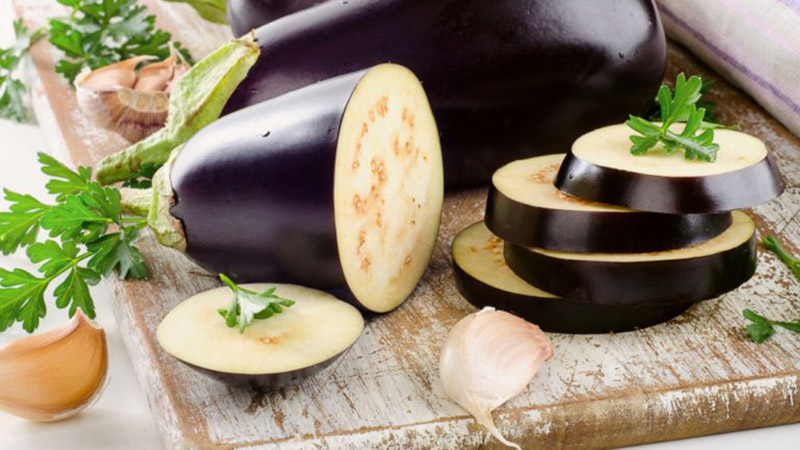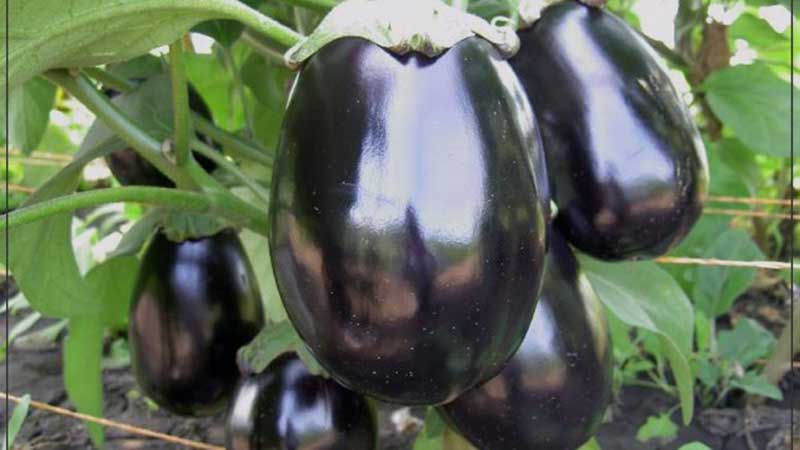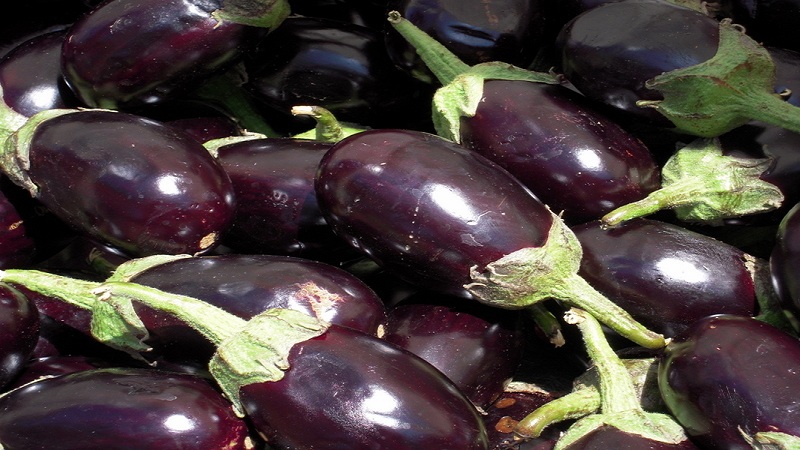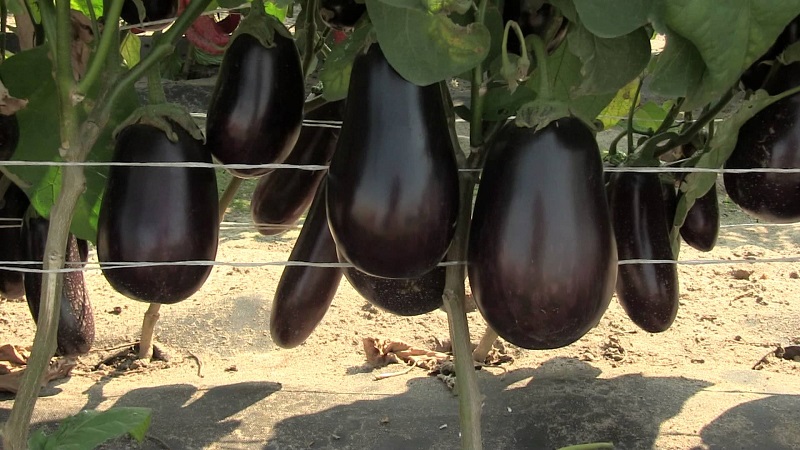What is an eggplant - is it a berry or a vegetable: we figure it out together and get to know the plant closer
Despite the fact that initially eggplant came from warm Southeast Asia, they have long been loved in harsher regions for their attractive color, pleasant taste and beneficial properties. In addition to its unusual appearance, this plant is fraught with many more secrets.
Later in the article we will figure out what an eggplant is - is it a berry or a vegetable, or maybe a fruit? We will tell you which family it belongs to and what is its origin, as well as give advice on growing and using.
The content of the article
The origin of the eggplant
Eggplant belongs to the nightshade family along with tomato, potatoes and tobacco. Like many members of this family, the fruit of an eggplant is a berry. However, from a culinary point of view, it is classified as a vegetable. Therefore, the answer to a question of interest to many will depend on the context.
Where do the “blue ones” come from (as the people call eggplants)? Their homeland is India and South Asia, where you can still find wild species of this plant. Europeans tasted and began to actively grow eggplants only in the 19th century. In our country, it is bred in areas with a favorable climate: in the Krasnodar Territory, Astrakhan and Rostov regions.

Specifications
Eggplant (or dark-fruited nightshade) is a perennial herb. Sprawling bush, up to 150 cm high. Flowering nightshade usually occurs in the summer. Fruit ripening usually occurs 100-150 days after germination.
The fruit is a complex berry by its botanical characteristics. The weight of such berries reaches 2 kg, and the color can be different and depends on varieties: they can be the usual purple (see photo), white, yellow and dark green. Inside the fruit are small, rounded seeds that ripen in late summer or early autumn. The fruits are consumed in the phase of technical ripeness - before the seeds ripen. The eggplant bush has a powerful root system, its diameter can reach 2 m.
The fruits are of high nutritional value. 100 g of the edible part of eggplant contains on average 0.5-1.5 g of proteins, 0.1-0.5 g of fat and 4-5 g of carbohydrates. The average calorie content is 24 kcal per 100 g of product, which allows it to be classified as low-calorie foods.
"Little blue" are rich in vitamins B and C, in lower concentrations they contain vitamins A, K and PP. Also, eggplant fruits contain iron, phosphorus, copper and a large amount of potassium (up to 240 mg per 100 g).

Benefit and harm
Thanks to the vitamins and minerals contained in eggplants, their systematic use has a positive effect on human health:
- prevents the formation of blood clots;
- lowers blood pressure;
- has an antibacterial effect thanks to vitamin C;
- lowers blood cholesterol levels;
- due to its low calorie content and minimal fat content, eggplant is considered a dietary product and is used for weight loss.
The "blue" ones have almost no harmful properties. However, people with gastritis or ulcers should use eggplants with caution - their digestion may not be able to cope with the coarse fiber of the vegetable.
You should not overcook eggplant, because its pulp tends to accumulate fats and carcinogens.
The overripe fruit is saturated with the poison solanine, which causes nausea, vomiting, and diarrhea.
Important!Overripe eggplants are covered with brown spots, they have an excess of seeds, the stalk looks rotten. Least of all solanine in white eggplants.

Algorithm and features of cultivation
Growing an eggplant is not an easy task, even for an experienced farmer. This plant has a long growing season (100-150 days), so sowing should be done in early February. Given the whimsical nature of the southern guest, you will have to use the seedling method and plant the plant in a greenhouse.
To grow eggplants, you will need:
- Prepare soil for seedlings. You can use both a special store and cook it yourself from humus and turf in a 2: 1 ratio.
- Soak seeds for 12 hours. This will improve their germination.
- Plant the seeds in the ground 2 cm, water and cover with foil.
- As soon as the first shoots appear, remove the film.
- After a week, transplant seedlings into open ground.
- Take care of plants: regularly loosen and water the soil, eggplants are very fond of water.
- Fertilize the bushes three times over the summer using a mixture of mineral and organic fertilizers.
- Pay attention to hilling and weed control to get higher yields.
- Don't forget about the benefits of mulching. It accelerates ripening for a whole week, increases yield by 30%, and most importantly - protects plants from the harmful effects of the external environment and pests... Mulch can be organic (hay, grass, coniferous branches) and inorganic (polyethylene, roofing material). You can also use unnecessary paper and cardboard for mulching. The mulch is evenly spread between the bushes.
- Once the fruit has a characteristic glossy sheen, it's time to harvest.

How to choose and store
If you do not start to get involved with the cultivation of eggplants with your own hands or do not have this opportunity, then you should know the rules for choosing them when buying. Examine the body of the fetus carefully: there should be no damage, dents or suspicious stains on it. The vegetable itself must be firm enough. Do not take soft fruits: most likely, they are overripe or rotten.
It is better to store eggplants in the refrigerator without any container blocking oxygen access for several weeks. If you want to preserve the fruits for a longer period, then it is better to wilted or salted.
Application of eggplant
There are many different types of eggplant dishes. You can do anything with them: boil, fry, simmer, dry, grill, salt. The most popular dish of this vegetable in our country is eggplant caviar.
To prepare it you will need:
- eggplant - 600 g;
- onion - 1 pc .;
- medium carrots - 1 pc .;
- a tomato large - 1 pc.;
- garlic large - 1 clove;
- parsley - a couple of branches;
- vegetable oil - 3-4 tbsp. l .;
- salt, sugar, ground black pepper - to taste;
- tomato ketchup (optional) - 1-2 tbsp. l.
Preparation:
- Wash, dry the vegetables, peel the carrots and onions.
- Pour vegetable oil into a preheated pan, put chopped onions and carrots, fry for 5-6 minutes.
- Add the diced eggplant, lightly fry it, add an incomplete glass of water, cover and simmer over medium heat for 10 minutes, stirring occasionally.
- When the eggplant becomes soft, add the tomato grated on a coarse grater, discard the skin. Season with salt, pepper, add a little sugar and cook for another 10 minutes.
- Add chopped herbs and garlic. Stir and cook for another minute.
- Let the caviar cool slightly, transfer to a blender and beat until the desired state: smooth or with small pieces. You can add more salt, sugar or pepper to taste.
- Transfer the prepared eggplant caviar to a deep dish, cover with cling film and refrigerate for a while to mix the flavors, although you can serve it right away.
Council. The color in this case will be natural. If you want a richer red color, add some ketchup or tomato paste at the stage along with the grated tomato. Also, for color, 1 tsp can be added to classic eggplant caviar. ground red paprika.

Conclusion
Eggplant is an extremely interesting plant. Its fruits are berries, but it is cooked like a vegetable. It has a low calorie content, but at the same time high nutritional value due to its high fiber content, fights cholesterol and high blood pressure, strengthens blood vessels and helps to lose weight.
However, first of all, "blue" ones are loved for their excellent taste and many ways of cooking. If you want to pamper yourself and your family with a dish made from this gourmet vegetable, choose only hard fruits without stains or damage.